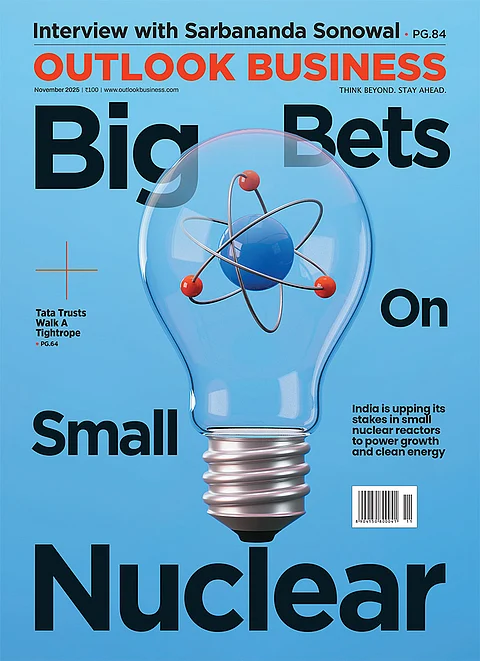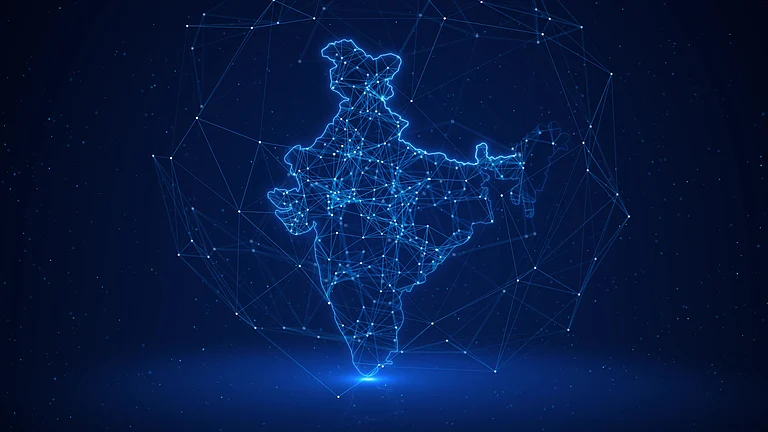
Maya Research was born from founder Dheemanth Reddy’s early experiences in rural Andhra Pradesh, where he saw how technology excluded people whose accents and languages mainstream systems couldn’t recognize.
The story traces how Reddy and CTO Bharath Kakumani engineered globally competitive speech models through frugal methods by rotating cloud credits, building efficient training pipelines and collecting India-first voice data village by village.
Despite limited funding, Maya’s models now rank among the world’s top TTS systems, outperforming far larger rivals, while the company doubles down on its strongest moat: proprietary multilingual datasets rooted in real accents, emotions and cultural nuance.
Former collaborators describe a culture centred on problem-solving over hierarchy, with Reddy championing a builder’s mindset, strict protection of India’s voice data and a belief that AI not will power India’s next wave of technological transformation.
For 23-year-old Dheemanth Reddy, the idea for Maya Research AI wasn’t born in a lab or a boardroom, but from something much closer home. Growing up, he watched how his mother and many others in rural Andhra Pradesh struggled to communicate clearly with technology that didn’t understand their accent, dialect, or language. That disconnect stayed with him. Years later, while studying at New York University, he began exploring how artificial intelligence could recognise and respond to Indian speech patterns with the same nuance as English.
For him, technology had always felt one-sided because humans had to adapt to it, not the other way around. That realization eventually led him to build Maya Research, a deep-tech startup reimagining voice AI for Indian languages.
The Personal Roots of the Problem
Growing up in a small Andhra town, Dheemanth saw firsthand how technology excluded people.
For millions, speech was not just the primary way to communicate, it was often the only way. Yet most digital systems demanded English, a language that barely ten percent of Indians speak fluently.
He calls this the internet’s original bias. “The internet was built in English,” he says. “To access it, people had to learn English first. That leaves out 90% of the world.”
Maya Research was born from that gap, an attempt to make machines that could understand and respond to people in their own languages, complete with the emotion, tone and texture that make human conversation real.
The idea of inclusion isn’t abstract for him. During field visits to villages, he saw how even basic digital interactions often fail. Many people had never made a single UPI payment, not because they didn’t want to, but because they couldn’t read the errors or instructions.
He believes the true adoption of technology will come not from big cities or social media but through local champions: the people who leave villages, learn something new, and return. “Technology will reach rural India through someone who knows the path,” he says.
The Role of AI
While attempts have been made even earlier to create sophisticated speech-to-text engines capable of deciphering Indian languages and dialects, it is the arrival of AI that has changed the game.
The AI-based Maya1, for example, can create virtually any voice from a twenty-something British woman to an American man or even a theatrical, otherworldly growl and layer it with emotional cues such as laughter, whispers, tears or anger.
The startup’s speech models have topped global leaderboards, outranking models of deep-pocketed players like Google and Hume AI, while closing in on those of Microsoft and Nvidia. The model streams responses instantly, runs on a single GPU despite its 3-billion-parameter scale, and consistently outperforms leading proprietary systems.
Dheemanth says that if he had to choose between giving India healthcare, education or AI, he would choose AI “a thousand times,” because it could unlock the other two.
Interestingly, his own path to AI was very unlikely. Dheemanth says he has always been driven by curiosity, and as a child, he would take gadgets apart to see how they worked. His parents expected him to aim for the IITs, but he resisted, worried that the IIT route may take him away from his core focus on AI and starting up.
After school, he briefly explored finance, fascinated by markets and data. “I wanted to be a hedge fund manager,” he says, “but when I asked myself what I really wanted to do, the answer was simple, I wanted to build.”
That instinct led him to New York University, where he studied computer science and finance. There, he met AI trailblazer Yann LeCun, who was on campus as a professor teaching one of Reddy’s classes. “Just being in the same room as him was inspiring,” he recalls. “Sometimes inspiration doesn’t need a conversation. It’s energy.”
A stint in Silicon Valley followed, giving him a crash course in the culture of long-term thinking. “In the Valley, people build with the mindset of a century,” he says. “That’s what India needs, more patient builders.”
Building within Constraints
If Dheemanth is driven by the “why,” Bharath Kumar Kakumani, Maya Research’s CTO, is the engineer obsessed with the “how.” He has spent the past year architecting the systems that make Maya’s models possible, designing training pipelines that squeeze maximum efficiency out of minimal compute. His focus on frugal, clever engineering is what helps the company to secure a spot in the global top 20 on the Artificial Analysis Speech Arena (TTS) leaderboard this year, one of the industry’s key benchmarks for voice quality.
Without access to the deep pockets of big tech, the team trained models by spreading workloads across multiple cloud providers like Google, AWS and others, rotating compute credits to stay within budget.
“Every day I think about cost,” Dheemanth says. “Not spending money makes you resourceful, like ISRO sending a rocket to the moon on a fraction of NASA’s budget…A lot of our training happens using free cloud credits, especially through programs like Microsoft Azure’s startup credits. We’ve managed to secure around $150,000 worth of cloud resources by simply convincing partners of what we’re building.”
In the end, he says, the focus should not be on raising funds and valuations. The focus, he insists, should be on metamorphosis. “Raising money is easy. Spending it wisely isn’t…We’re not looking to raise more funding at this stage,” he says. Maya, he adds, has learned to stretch every rupee and compute the cycle.
But money wasn’t the only hurdle, data was an even bigger one. “AI loves good data,” he says, “but good Indian voice data doesn’t exist. We had to collect it ourselves by recording conversations, understand dialects, and go village by village.”
In a country known for its motto, ‘Many Languages, One Nation’, designing voice AI, says Reddy, is like designing for a hundred countries at once. “Every few kilometres, the dialect changes; every few dozen, the culture does.”
Maya’s core models are trained on a mix of open-source English corpora and proprietary datasets the team has built from scratch. Alongside English, the company has developed a growing Hindi and Telugu corpora, part of its push toward truly multilingual voice AI.
The company’s architecture, designed in-house, was improved for efficiency and capable of handling large datasets with minimal compute. It’s a lesson in frugal change that mirrors India’s own approach to technology: doing more with less.
For Maya, this means building datasets that go beyond vocabulary. The team studies what people talk about and how. In Andhra, conversations tend to revolve around politics and real estate; in Tamil Nadu, cinema and culture dominate; in Delhi, humour and daily chatter take precedence. “You can’t just collect audio,” he says. “You have to collect culture.”
By 2026, Maya aims to build one of the world’s largest multilingual speech datasets, 10-15 times its current size.
But beyond scale lies a deeper ambition: owning India’s voice.
Reddy believes that Maya’s edge lies in owning its own data, not renting access to others’. “We’re already ahead in many ways,” he says, referring to the company’s extensive library. “Maya is built on data that’s only available to us and that’s our edge. The more unique and local our data becomes, the stronger our defensibility gets.”
Protecting India’s Voice
Few founders his age speak as passionately about data privacy. Dheemanth believes India must guard its linguistic and emotional data as fiercely as its borders. “Your voice is your identity,” he says. “Even if I don’t see you, I can recognize you.”
He warns against allowing Indian voices to train foreign AI systems, calling it a new form of digital dependency. “It’s like giving away our public sentiment and emotions,” he says. “The West can literally shape how we think. We shouldn’t even give them the chance.” That belief drives Maya’s philosophy of frugality and focus. Deep tech may be capital-intensive, but Maya operates with restraint.
He believes Indian investors still underestimate the country’s potential in deep tech. “We invest in banks, not builders,” he says, referring to Indian investors’ preference for lenders over inventors.. “But sooner or later, everyone will see that AI is the next hundred-trillion-dollar opportunity.”
A Builder’s Culture
Inside Maya, hierarchy is almost non-existent. Titles like “CEO” make him uncomfortable. Some team members call him hacker, others builder or student. What matters is the output.
He keeps the team aligned by constantly asking whether they’re solving the right problem. “Everyone knows what everyone else is working on,” he says. “We move together.” The result is a culture that prizes curiosity over credentials, an extension of how Maya itself was built.
For him, success is measured not in revenue but in relevance. “If my parents can use my technology, that’s success,” he says. “Every new feature is put through that test:Would a mother find it useful?”
He pauses for a moment, then adds, “Solving something that doesn’t exist is insanely hard. But if you can make it happen, that’s enough.”
By 2026, Dheemanth hopes Maya will become India’s most widely used voice interface, enabling people to talk to computers and gadgets in their own tongue. He sees speech as the next universal interface, one that could eventually power everything from learning to creativity. “You’ll just speak to make images, code, or learn,” he says.





























